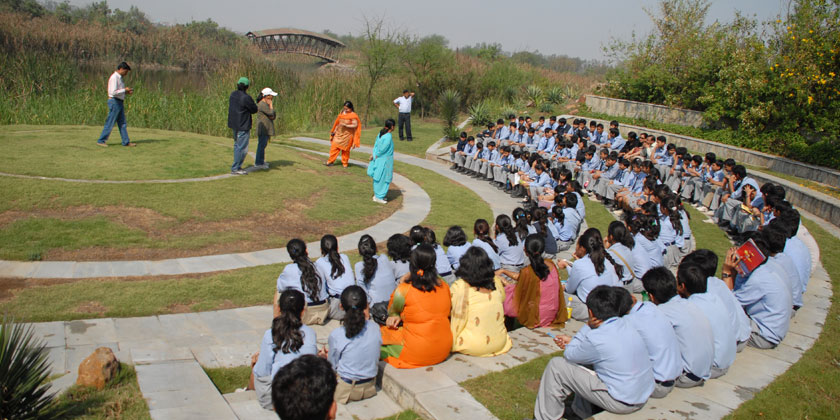Yamuna Biodiversity Park
Herbal garden, in essence, is a reference collection of around 450 living species that have been important in human culture throughout the ages. This garden is a green oasis with a diversity of medicinal plants. In between more than 200 seasonal changing beds and borders are trees with medicinal properties that provide shade to delicate plants. The Yamuna Biodiversity Park herbal garden is a charming place to visit any time of the year. Spring brings exuberance and the full bloom of Barlerias, summer the flowering of the Hibiscus, the monsoon Ocimum and Costus and winter a profusion of Andrographis, Bacopa, Calendula, Aloe, and Tylophora. A total of 434 species including 120 species of trees, 280 species of shrubs and herbs, 26 species of climbers and 8 species of grasses have been planted. The Cerulean butterfly flutters over the beds of Spilanthes acmella, the only place in the park where they found and frequent bird sightings are those of the hoopoe, the green bee eater, and doves.
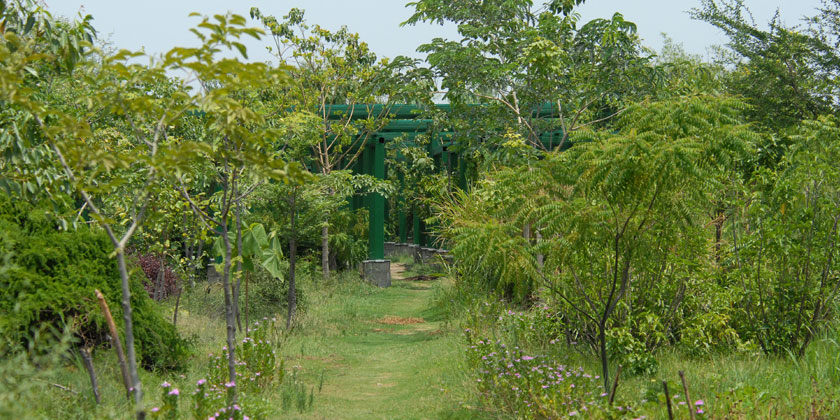
Butterfly Conservatory
Butterfly Conservatory of Yamuna Biodiversity Park has become a major ecotourism destination for visitors and nature lovers. There are four small ponds to add humidity to the surroundings and provide moisture to the butterflies. The Plantation of native plants will attract thousands of wild butterflies who play important roles as pollinators, as part of the web of life and as cultural icons for human beings. Within beds of butterfly attracting plants are trees that have been landscaped to resemble mixed deciduous forest communities. Unlike birds, butterflies are late risers and can be seen in large numbers late in the morning. Their population peaks in spring but they remain visible right up to the monsoon. Presently as many as 36 species of butterflies and caterpillars can be sighted here.
Stroll through the beautifully designed butterfly conservatory; watch the blossoming of new life in a nearby zone of larval host plants and sericulture and admire flittering of tasar silk moth. The “butterfly observation shed” made of bamboo is a quiet place to sit and observe these beautiful insects at work on plants like Thevetia and Milkweed.
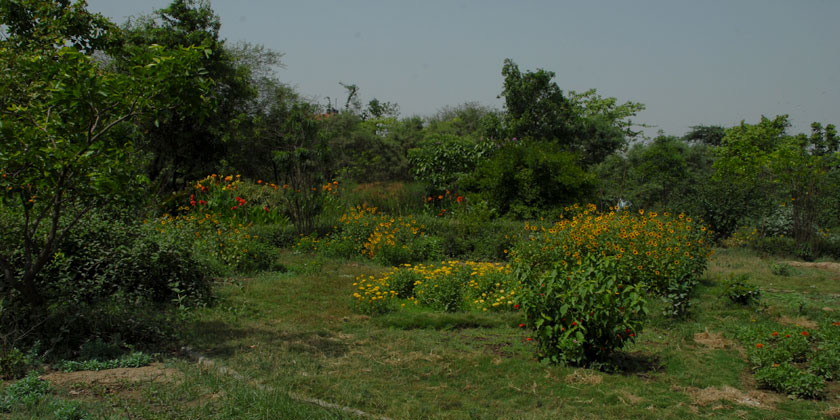
Bambusetum
The Bambusetum, a symbol of endurance and resilience, allows specialists to study the wide diversity of bamboo species while generalists enjoy their variety: the climbing Ochlandra, shrub -like Arudinaria, the pole like golden bamboo and the belly shaped Buddha-belly bamboo. Presently, 37 species of bamboos are grown in the Bambusetum. One can see nests of the scaly breasted munia and the red vented bulbul and regularly sight the common castor butterfly hovering over the emerging juvenile bamboo shoots.
Sacred GroveA total of 30 species of Ficus have been planted in the area called the Sacred Grove which is developed to showcase plants of religious importance. In the field of conservation, however the term Sacred Grove is used to denote repositories of rare and endemic species, remnants of the primary forest left untouched by the local inhabitants due to the belief that deities reside there.
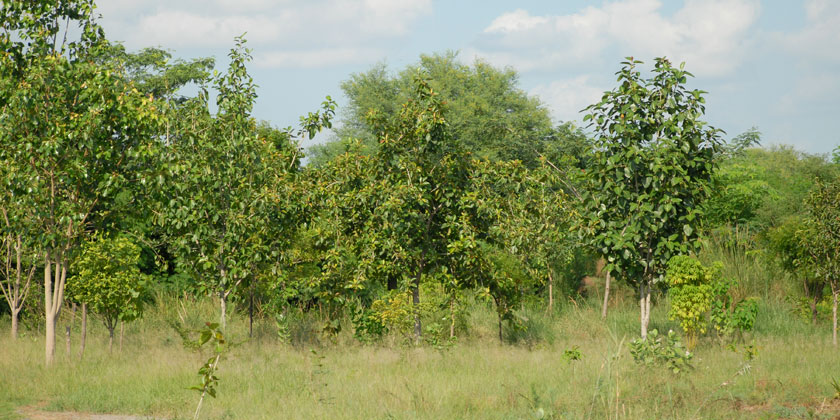
Wetlands
Two wetlands, which simulate natural water bodies, have been created in the Yamuna Biodiversity Park. One which is long and narrow simulating the river, is 1.8 km long; and the second, which is more open and deep, is spread over about 2 hectares. The creation of wetlands serves three useful purposes. Firstly, it adds to the diversity of habitats, secondly, it performs the much-needed ecological functions of water purification, groundwater recharge, and storage of rainwater, and thirdly, it provides the soil for raising the ground level to avoid flooding in the post monsoon period so that the development of terrestrial ecosystems and plant communities can go ahead unhindered.
These wetlands are now home to hundreds of migratory birds as well as native bird species. In other words, a new bird sanctuary has been created within the ambience of metropolitan Delhi. The wetlands also help to preserve the aquatic genetic resources (invertebrates, turtles, fishes, zoo- and phytoplanktons) of the river.
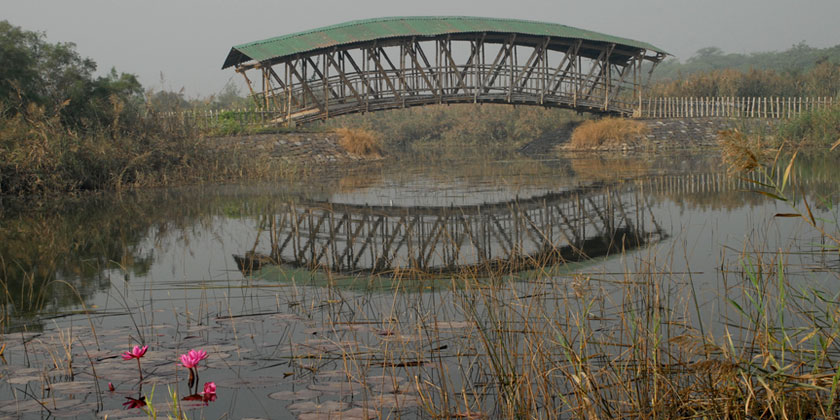
Deep Wetland
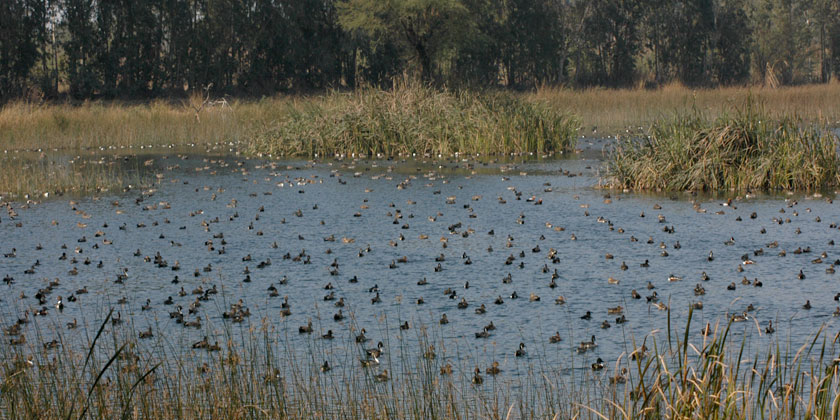
Nature Reserve Zone
A quiet area, where fewer visitors are allowed to roam around to avoid human disturbance, has been emerging as a Nature Reserve with different forest communities interspersed with a sprawling grasslands, where animals can live freely, move and boom in numbers.
20 different biotic communities are developed in the approximately 130 acres of the nature reserve zone; Adina dominated, Mitragyna dominated, Acacia dominated, Hardwickia dominated, grasslands, are to mention a few. The communities are developed by massive plantation programmes, some have already developed canopies and have attracted animals such a
s the monitor lizard, civet, jungle cat and Nilgai, which were never found before here
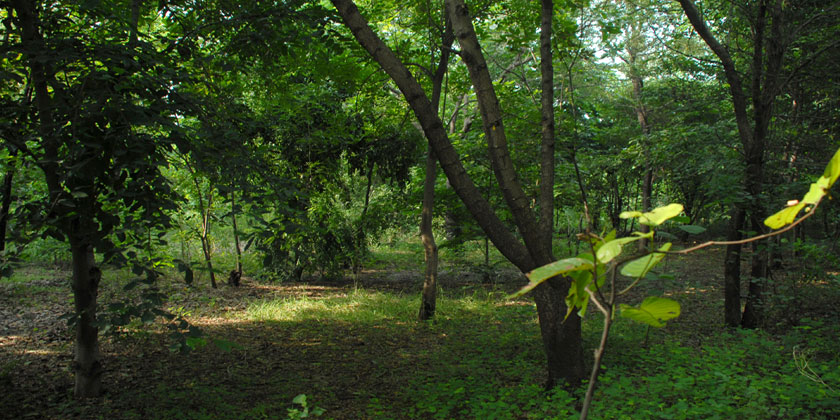
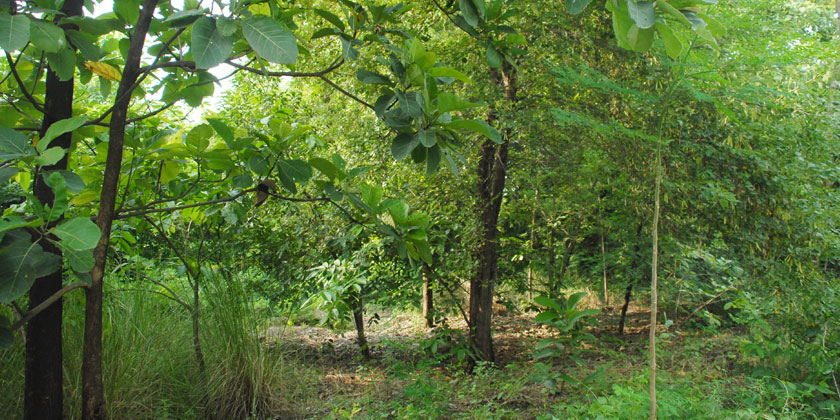
Nature Education
The Yamuna Biodiversity Park is envisaged to play an important role in imparting Nature Education particularly to school and college students who are the decision-makers of tomorrow. The park with its developing ecosystems, which are in various stages of development, provides a good opportunity to learn about prominent species of plants and animals, seed germination, bioremediation, ecosystem redevelopment, food webs, and life history strategies

